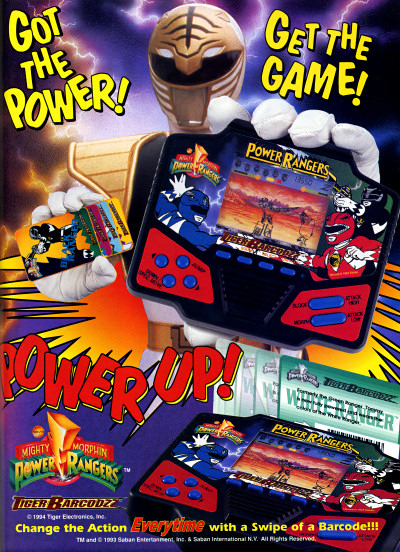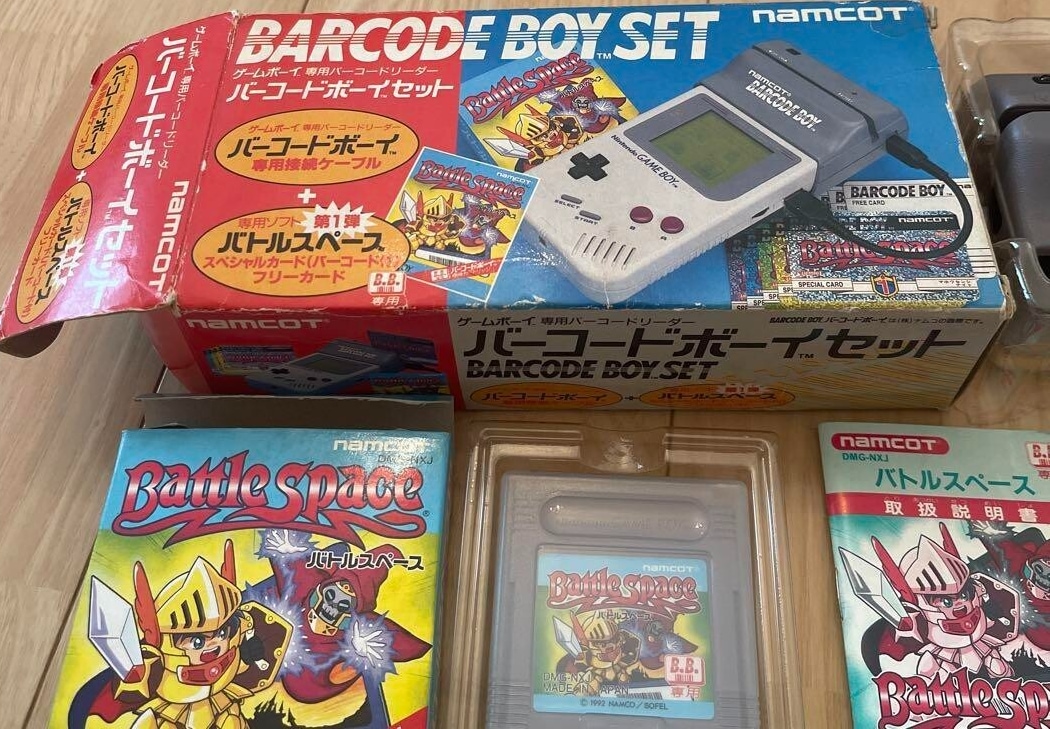We recently reported on a strange little toy called the Barcode Battler that came out in 1990, after a time of handheld gaming dominated by the Game Boy and the Sega Game Gear. The Barcode Battler allowed players to scan the bar code on their cereal, cleaning supplies, and so on, and then use that bar code to create a character stat for a game. It was one of the first examples of this type of device and was launched in Japan by Epoch Co.
The Barcode Battler included a pack of cards containing bar codes, which allowed users to scan the bar codes of any products they wished and receive a character, enemy, or item in a very basic RPG battle style. It was exciting to scan the bar code of some everyday item, and see what stats it would produce for your wizard or warrior. There were no graphics at all, only numbers on an LCD display.
Although the Barcode Battler didn’t have much success in the West, it did relatively well in Japan. So well, in fact, that it spawned official card packs for The Legend of Zelda and Super Mario Bros, as well as an add-on to connect it to the Famicom and Super Famicom.
For those who lived in an era prior to cell phones and being able to connect anywhere, it was a unique spin on the cyberpunk dream, bridging the gap between the real world and the virtual world. In Japan, the fad became so popular that some products sold out because children believed they had special barcodes.
While the idea seemed innovative, the execution of the Barcode Battler was limited in several areas. The LCD screen was simple, the game itself was repetitive, many barcodes did not function as anticipated, and the scanner was unreliable. When comparing the experience to handheld consoles with actual graphics and audio, the experience felt shallow.
Although the Barcode Battler was an original experiment, around the same time, Tiger Electronics, which never met a gimmick it was above ripping off, produced Barcodzz, an attempt to market a western version of the concept using barcoded cards and a creature-collecting mechanism. While the Tiger Barcodzz (image above courtesy of VC&G) did produce a playable product, it was only marginally successful, with very limited depth of gameplay, and a scanner that could be uncooperative at best.
Bandai even experimented with the barcode concept with Barcode Wars, a pre-Battler card-scanner hybrid, which paired manga-styled cards with a simple LCD combat readout. Although the system was basic, it had ambition to it, including themed card sets and some rudimentary RPG elements, and had exclusive games in franchises that would be revisited on their later WonderSwan console, like Mega Man.
Around this time, the Barcode Boy was an accessory for the original Game Boy released under the Namco (Namcot) brand in Japan in 1992. It attached via the Game Boy’s link port and allowed you to scan barcodes from special cards, and yes, even from store-bought packaging, to unlock characters, items, or features in compatible games.
Then, almost a full decade after the Barcode Battler, the Skannerz series from Radica launched around 2000. Skannerz allowed users to scan UPC barcodes to collect creatures, fight with them, create multiplayer games using multiple devices, and even create tribes. Of everything in this article, this was easily the most successful, likely due to a very prominent advertising campaign.
The last gasp occurred years later with stuff like the Game Boy Advance e-Reader and UB Funkeys. Today, barcode gaming is almost entirely a footnote. However, there are echoes of the technology in modern AR games, mobile apps that utilize scanners, and even QR-code interactions. In that respect, the Barcode Battler and its fellow innovators were well ahead of their time.
If you stumble upon a Barcode Battler, Skannerz, or a similar relic at a retro gaming store, pour one out for a device that tried to blur the lines between the supermarket shelf and the gaming world. It looks silly today, like a WinAmp skin, but it reflected the spirit of the times. There was a connection between the packaging, product, and play, and there could be hidden mechanics locked within everyday objects.
What did you think of this article? Check out our retrospectives on the Mega Duck, the Neo Geo X, and the “lost” Nintendo DS model. Let us know in the comments below, and chat with us in our Discord!
This page may contain affiliate links, by purchasing something through a link, Retro Handhelds may earn a small commission on the sale at no additional cost to you.


